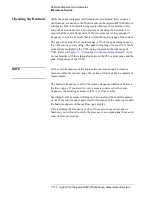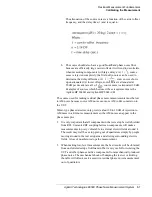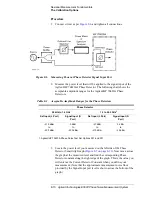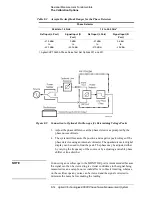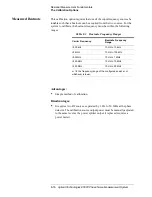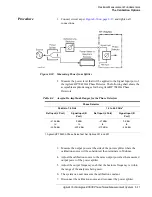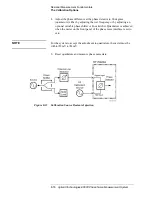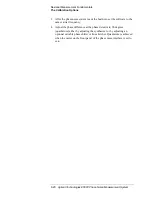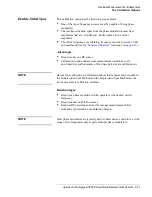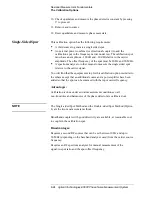
Agilent Technologies E5500 Phase Noise Measurement System
8-9
Residual Measurement Fundamentals
The Calibration Options
The Calibration Options
There are five calibration methods that to choose from for calibrating a
two-port measurement. The procedure for each method is provided on the
following pages. The advantages and disadvantages of each method are also
provided to help you select the best method for your application. The
primary considerations for selecting a calibration method are:
•
Measurement Accuracy
•
Equipment Availability
User Entry of Phase
Detector Constant
This calibration option requires that you know the phase detector constant
for the specific measurement to be made. The phase detector constant can be
estimated from the source power levels (or a monitor oscilloscope) or it can
be determined using one of the other calibration methods.
Once determined, the phase detector constant can be entered directly into the
system software without going through a calibration sequence. Remember,
however, that the phase detector constant is unique to a particular set of
sources, the RF level into the phase detector and the test configuration.
Advantages:
•
Easy method for calibrating the measurement system.
•
Requires little additional equipment: only an RF power meter to
manually measure the drive levels into the phase detector or monitor
oscilloscope.
•
Fastest method of calibration. If the same power levels are always at the
phase detector, (as in the case of leveled outputs), the phase detector
sensitivity will always be essentially the same (within a dB or two). If
this accuracy is adequate, it is not necessary to recalibrate.
•
Only one RF source is required.
•
Super-quick method of estimating the phase detector constant and noise
floor to verify other calibration methods and check available dynamic
range.
Disadvantages:
•
The user entry of the phase detector constant is the least accurate of all
the calibration methods.
•
It does not take into account the amount of power at harmonics of the
signal.

